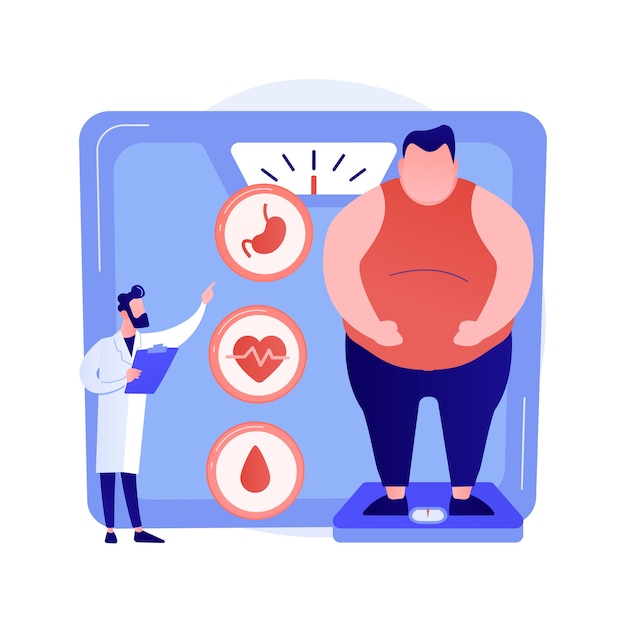
Obesity has become a widespread health issue, leading to serious chronic conditions and significantly impacting quality of life. While traditional methods like dieting and exercising can help with initial weight loss, many people struggle to maintain these results over time. For those looking for a longer-lasting and effective solution, intragastric balloons have emerged as a promising option for weight loss.
This non-surgical procedure involves placing silicone balloons in the stomach, which partially fill the space and make you feel full after eating smaller portions of food. The feeling of satiety also reduces frequent hunger pangs, making it easier to stick to a healthy diet. However, it’s important to combine this procedure with regular exercise and nutritional guidance for the best results. Without these lifestyle changes, the weight lost through the gastric balloon may return.
Intragastric balloons are particularly suitable for individuals who prefer to avoid invasive surgery. This option is also ideal for those who have struggled to lose weight despite consistent dieting and exercising. Obesity, if not addressed, increases the risk of severe health conditions, including cardiovascular disease, diabetes, respiratory problems, and even a shortened lifespan by five to seven years. Therefore, opting for gastric balloons can not only help reduce weight but also improve overall health.
### How Gastric Balloons Work
The balloons are either filled with saline or air, which creates a sense of fullness by limiting the stomach’s capacity for food. The procedure is minimally invasive, allowing most patients to return home the same day. On average, six months is enough to see significant weight loss, though the success rate depends on adhering to a healthy lifestyle. For some patients, the balloons may need to be re-inflated or reinserted for continued effects. Meanwhile, dietary recommendations from health professionals can help ensure proper nutrition during the process.
### Who Should Consider Gastric Balloons?
This option is especially effective for individuals who are pre-obese (with a Body Mass Index, or BMI, between 24 and 29.9) or obese (BMI 30 or higher). People with a BMI over 40, or those with a BMI of 35 and above accompanied by health conditions like diabetes, are generally considered eligible for weight-loss surgery. However, for individuals who don’t qualify for surgery or prefer to avoid it, gastric balloons offer a safe and effective alternative to kickstart weight loss.
By reducing weight to healthier levels, gastric balloons can even prevent the need for surgery, particularly for those in the pre-obese stage. Over a period of six months to one year, patients often see significant weight reduction, which helps lower the risks associated with obesity.
### Types of Gastric Balloons
There are two main types of intragastric balloons: saline-filled and air-filled. Both are effective for weight loss but have slight differences:
1. **Saline-Filled Balloons:** These are filled with fluid and are commonly used for rapid and effective weight loss. Studies indicate that individuals with a BMI between 25 and 29.9 lose around 9% of their body weight, while those with a BMI of 40 or higher lose approximately 12%. However, results vary, especially if patients neglect essential lifestyle changes like diet and exercise.
2. **Air-Filled Balloons:** These are lighter than saline-filled balloons and may be easier for some individuals to tolerate. They function similarly by creating a feeling of fullness, but their weight-loss results may be slightly less dramatic. A study showed a reduction of approximately 29 pounds in individuals with an average BMI of 39.75 after six months of using air-filled balloons.
### Benefits and Safety
One of the biggest advantages of gastric balloons is that they do not alter the anatomy of the stomach. For example, saline-filled balloons work by slowing the stomach’s emptying process, keeping you full longer, while air-filled balloons stimulate stretch receptors to signal fullness to the brain. This approach ensures weight loss without interfering with natural bodily functions.
The procedures are generally safe, with only mild side effects like nausea, vomiting, and abdominal discomfort, which typically subside with medication. Severe complications, such as small bowel obstruction or perforation, are extremely rare. Monthly follow-up checks, such as X-rays, are recommended to ensure the balloons stay securely in place.
Despite its benefits, it’s important to note that gastric balloons are not a permanent solution. They are designed for short-term weight loss and are typically removed after six months. Long-lasting results depend heavily on maintaining a healthy diet and consistent exercise routine. Without these efforts, there is a risk of regaining the weight.
### Limitations and Considerations
While gastric balloons are highly effective, they do have some limitations. In rare cases, complications like acid reflux or balloon migration may occur. Additionally, some patients may regain weight if they fail to stick to their diet and exercise plan after the balloons are removed. Not everyone achieves drastic results, especially if lifestyle changes are ignored.
### Final Word
Overall, intragastric balloons are a safe and effective option for short-term weight loss in pre-obese and obese individuals. When combined with a healthy lifestyle, they can significantly improve health outcomes. While the procedure comes with some side effects and limitations, its benefits outweigh the risks, especially when performed under professional guidance. For those struggling with obesity, gastric balloons can be a valuable tool in achieving and maintaining a healthier weight.